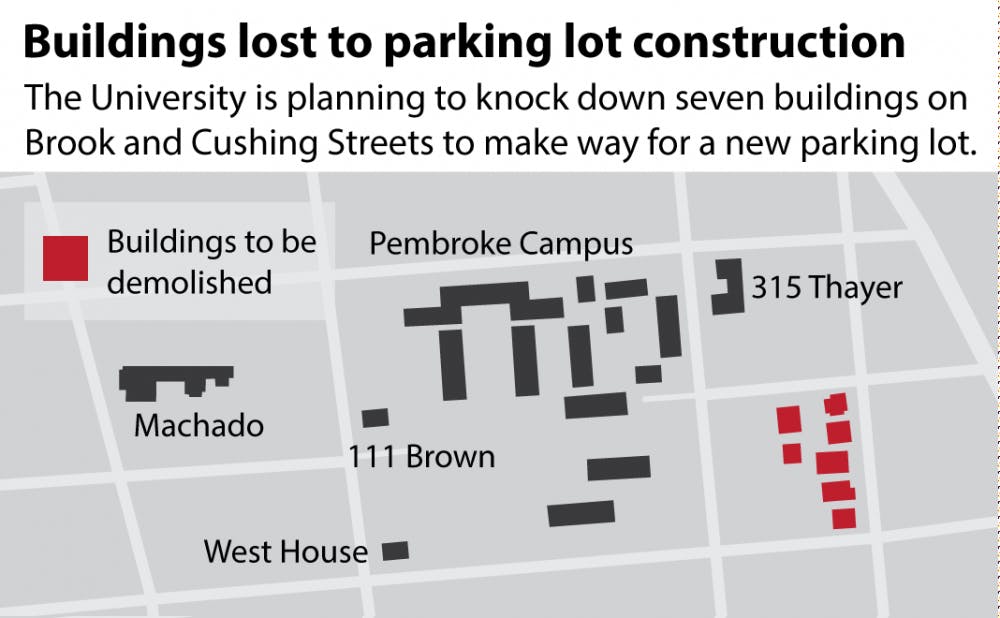A commission under the Providence Department of Planning and Development recommended the Providence Zoning Board of Reviews issue a two-year special permit to replace seven residential structures with a temporary commercial parking lot on Brook Street.
The University bought the seven buildings in July 2014, but cannot not begin working on the demolition until it gains a permit from the zoning board.
The decision to construct a parking lot was made in response to Thayer Street merchants’ requests for additional parking options, said Al Dahlberg, the director of state and community relations for the University. He explained that merchants support the plan because the lot’s close proximity to Thayer Street means it could accommodate potential shoppers.
But the University only plans to use the land as a parking lot temporarily. In the long term, the University intends to use the space “to meet emerging residential or academic needs,” according to its master plan. But the plan does not specify what will replace the parking lot once the permit expires in two years.
“It is important to note that the city almost never thinks of surface level parking as the highest and best use (for a plot of land),” said Bonnie Nickerson, director of the Providence Department of Planning and Development. The commission under the Providence Department of Planning and Development requested that Brown present “a better sense of the long-term needs for the site,” in 2017 when the permit, should it be granted, would be projected to elapse, she added. But because of the University’s strong record of repurposing temporary lots, there exists “a level of faith in Brown’s long term plans,” she said.
Brown’s plan to demolish buildings in a national historical district has sparked some controversy. Though the buildings themselves do not hold historical significance, the Providence Preservation Society opposes the project because it doesn’t see “surface parking as an added amenity to the city”, given that the parking lot holds little potential to better the “public psyche,” said Brent Runyon, executive director of the Providence Preservation Society.
Runyon added that he has seen “a lot of outrage on Facebook” regarding the parking lot’s construction. “I don’t think (the University) acquired the property knowing what they’d put there” in the long term, he said.
While surface parking is not the best use for the plot of land, the Brook Street structures are dilapidated, said Stephen Maiorisi, vice president of facilities management. “It would be more responsible to take them down now” than to leave them as a safety hazard, he added.
Maiorisi said he has not sensed a lot of controversy over the parking lot. If a private citizen were taking on the same project, it would not be a matter of public discourse at all because a private developer “wouldn’t need approvals like we do,” he said. Far from being able to carry out its own plans independently, Brown coordinated the details of the parking lot with the Providence Department of Planning and Development, he said.
Correction: A previous version of this article stated that Brown had secured a permit from the Providence Zoning Board of review. In fact, a commission under the Providence Department of Planning and Development recommended the board issue a permit. It also said the University could not demolish the seven buildings it purchased in July 2014 until it presented its plan to a commission under the planning and development department. In fact, it cannot begin working on them until it gains the aforementioned permit.





